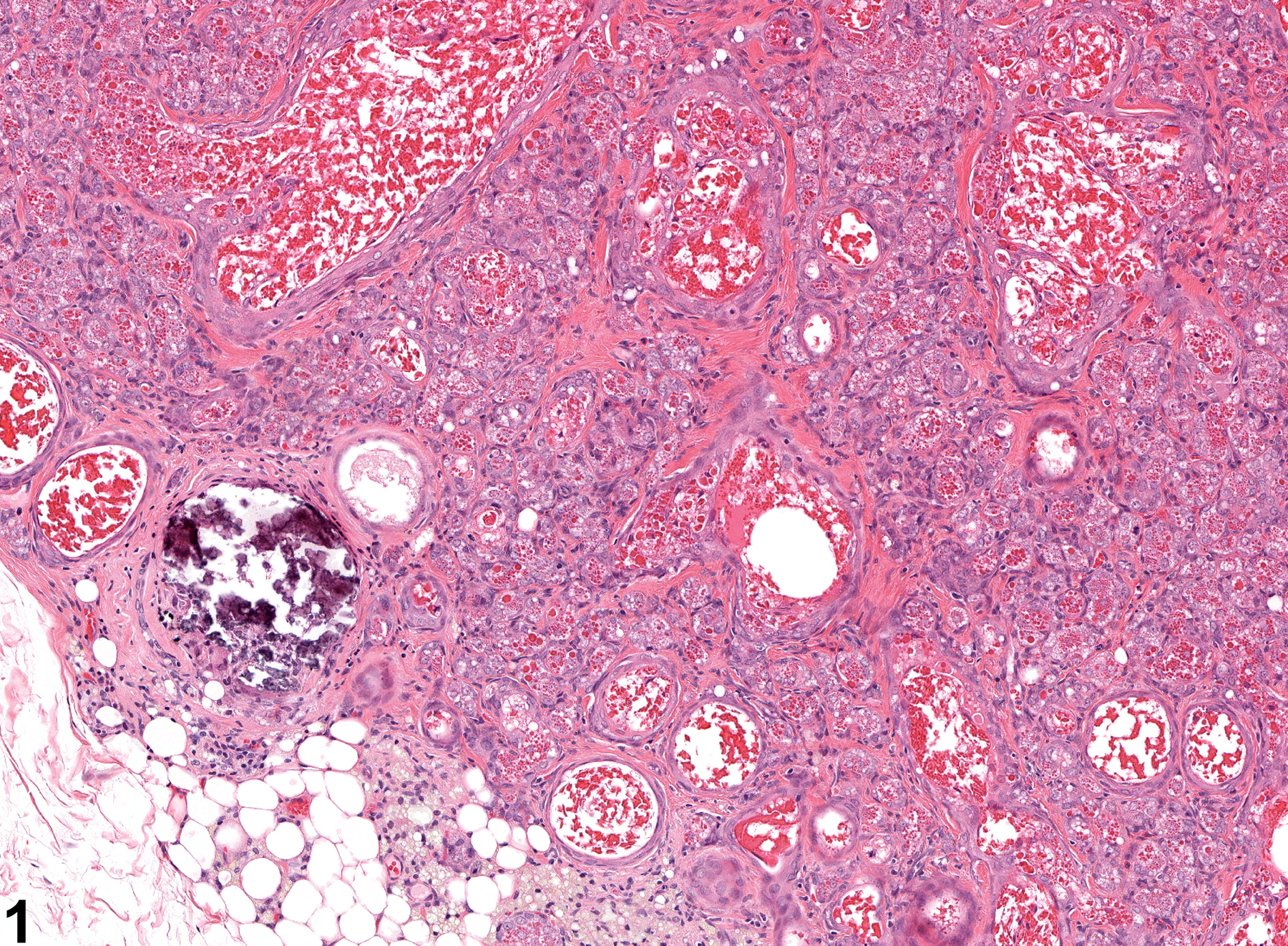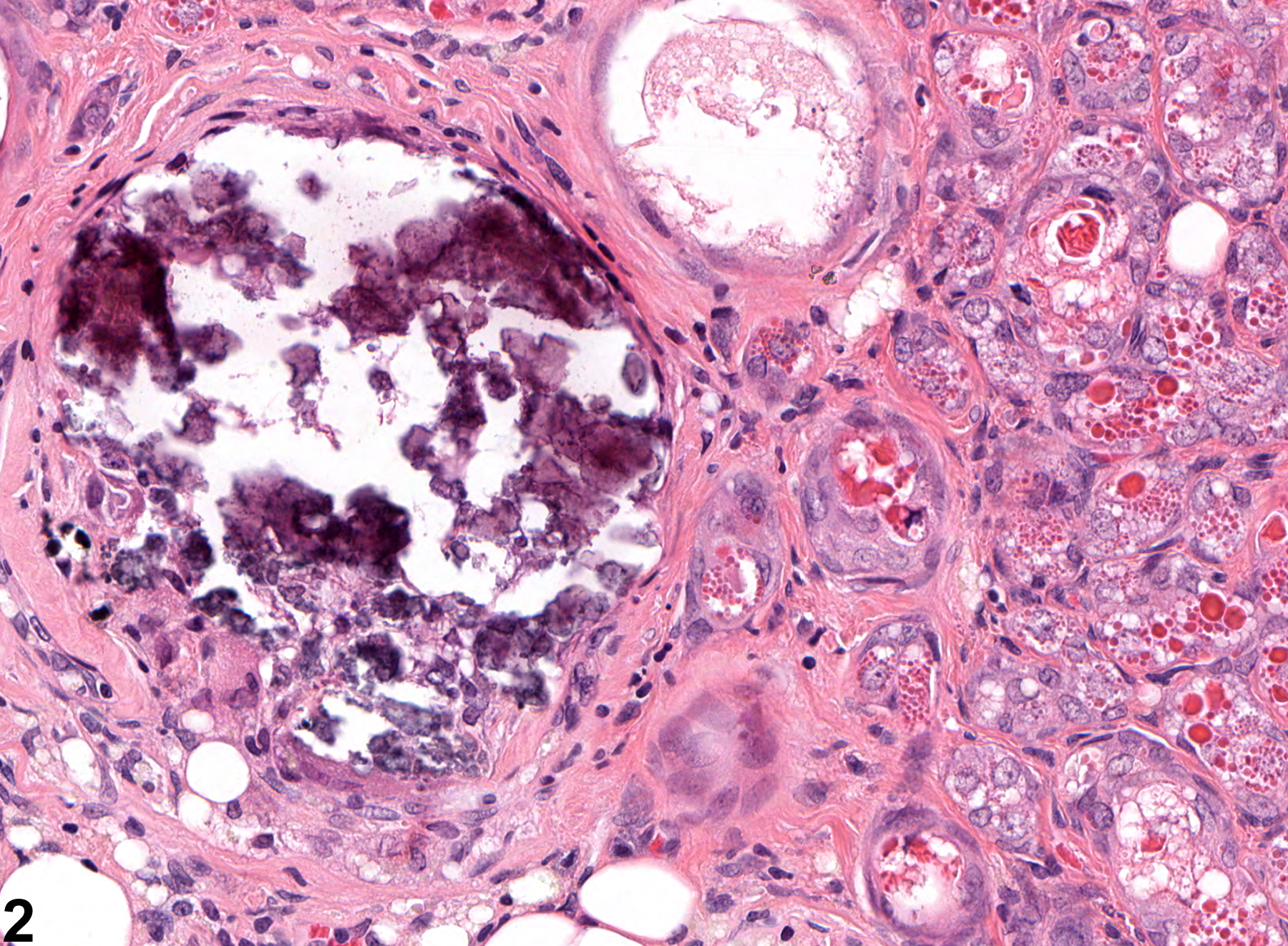Reproductive System, Female
Clitoral Gland - Mineralization
Narrative
Clitoral gland mineralization can be secondary to necrosis or inflammation (i.e., dystrophic mineralization) or in an area of hemorrhage. The histologic appearance of mineralization is basophilic granular to crystalline aggregates of purple material evident in the ducts or acini of the clitoral gland (Figure 1 and Figure 2). Primary or metastatic mineralization is uncommon in the clitoral gland.
Clitoral gland - Mineral should be diagnosed and graded when present in the absence of necrosis, inflammation, or hemorrhage (i.e., when it is primary or metastatic). Mineralization that is secondary to necrosis, inflammation, or hemorrhage (i.e., dystrophic mineralization) should not be diagnosed unless warranted by severity.
National Toxicology Program. 1999. NTP TR-480. Toxicology and Carcinogenesis Studies of Lauric Acid Diethanolamine Condensate (CAS No. 120-40-1) in F344/N Rats and B6C3F1 Mice (Dermal Studies). NTP, Research Triangle Park, NC.
Abstract: https://ntp.niehs.nih.gov/go/9762
Clitoral gland - Mineral in a female F344/N rat from a chronic study. There is focal mineralization within a clitoral gland duct.



